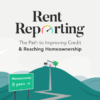Here at Digs, we love talking about buying your first home. It’s a lot of fun to go house hunting, imagine your new space and daydream about all the ways you’ll make it your own. But the less fun sibling of homeownership is always around the corner, refusing to be ignored…it’s your mortgage. In this article, we’ll touch on mortgage basics and what terms you should be familiar with.
Whether or not you’re excited about owing someone a whole lot of money, it’s typically one of the only ways to get into your first home. And we tend to think that someone who is willing to offer you hundreds of thousands of dollars to start your new life is pretty cool. That being said, you still need to know what you’re getting into because being informed on the basics can save you thousands in the long run!
Let’s start by talking about interest rates.
Interest rates and first-time homebuyers

So what is a good interest rate for a first-time buyer? Well, like other topics we’ve covered in the past, that will depend on a lot of factors. Your interest rate in many ways will be specific to you and your credit history, down payment amount and more. However, it will also depend on the market. Historically, there have been times where homeowners with the best credit were getting homes at a 10% interest rate, which today would seem ludicrous. Start paying attention to what the market is doing, work to control the factors that are within your power and work with a mortgage professional who will look out for your best options.
Mortgage basics: fixed rate mortgages
Think of a fixed mortgage as simply a fixed agreement. Just like a rental agreement where the landlord accepts a fixed amount each month for rent, a fixed mortgage rate won’t change over the life of the mortgage – whether you choose a 15 or 30-year term. Keep in mind, this is true only for the mortgage payment and doesn’t account for other amounts you may escrow – or add to your monthly payment – like home insurance and property taxes.
The reason your payment is fixed is because the interest rate stays the same. Whether or not market interest rates go up or down in the future, you are locked in for the same amount you agreed to on day one. Of course, this wouldn’t stay true if you decide to refinance your loan at some point – but that’s a different topic.
Fixed rate mortgages are a great option for many first-time homebuyers because they offer a level of predictability. Knowing what you’re going to pay for the next 15 or 30 years will help you with budgeting and planning for the future. Fixed rate mortgages are fairly simple to understand as well because instead of clauses that may change your terms fairly often, you know that what you agreed to on day one will be the same ten years down the road.
If your situation changes for the better, you can typically make additional payments, or even pay off your loan early, without penalties. Overall, a fixed rate mortgage is a straight forward, easy to understand, predictable option for homeownership.
Mortgage basics: adjustable rate mortgages
You guessed it, an adjustable mortgage means your rate is no longer guaranteed. This type of mortgage can be adjusted to match market rates, which means you may watch your mortgage payment increase as the years go on. In fact, an adjustable mortgage can dramatically change the amount you pay after an initial period often referred to as a “teaser” rate.
Unlike the fixed rate mortgage, an adjustable rate mortgage can be very complex and difficult to understand. Along with terms like “adjustment frequency”, “adjustment index”, “ceiling”, “cap” and “margin”, you may find an adjustable mortgage is difficult to compare to other options. That’s because the terms and fees vary from lender to lender and there’s no one standard by which to determine your best option.
For this reason, if you plan to investigate an adjustable rate mortgage, take the time to research and understand what you may be signing up for. Typically, this type of mortgage only makes sense if interest rates are predicted to decline significantly – which may be hard to determine – or if you don’t plan to stay in the home very long.
In addition to your mortgage, there are some other costs you may not have expected. Let’s take a look at some of the most common things you’ll see with your mortgage.
Types of Loans
As you may have guessed by now, not all mortgages are created equal. There are several different types of mortgages available, conventional and government-insured.
Conventional
With a conventional loan, you work with a private lender and will be responsible for paying back the loan to them. In order to secure this type of loan, you’ll have to have a reliable job, good credit, and a healthy down payment. Lenders will carefully review each of these to be certain that you’ll make your payments each month. Typically, conventional loans are more difficult to qualify for, but this is only because if you were to skip your payments, your lender is in jeopardy of losing their money.
Government-Insured
It’s no joke that homeownership is expensive! Thus, government-insured loans are put in place for those of you who may struggle to qualify for a conventional loan. Government-insured loans are the opposite of conventional loans, which means that they are protected by the government and make it possible for you to own a home if you have a lower income. Another perk is that they usually come with lower closing costs!
FHA
A perk from the Federal Housing Administration grants you the ability to put down as little as 3.5% of the home as a downpayment. If you qualify, you can own your home faster since you don’t have to spend time-saving up for that 20% down payment. Note that you still have to pay Mortgage Premium Insurance.
VA
The Department of Veteran Affairs makes it affordable for veterans to purchase homes with practically no downpayment. Be aware that there is a small fee attached that is usually anywhere from 1% to 3.5% of your loan.
USDA
If you’re looking to locate yourself in a rural area, a USDA loan might before you. The US Department of Agriculture extends loans to those in rural areas who’s income is on the lower end of the spectrum. With a USDA loan, you can buy a home with no down payment and lower interest rates.
If you’re interested in taking advantage of any of these loans, read up on them to see if you qualify!
PMI, or Private Mortgage Insurance
PMI is different from other types of insurance because you’ll be paying the premiums, but it actually protects the lender. Should you begin to miss your payments and have paid less than 20% of the home’s value back to the bank, this insurance will pay your lender to cover their costs of foreclosing, conducting repairs, and re-selling the property. That’s a down and dirty description and there’s a bit more to it, so if you’d like to learn more, check out our article on PMI here.
Title Insurance
Title insurance is an upfront cost you’ll pay when you buy a house. This time the insurance protects you as the buyer, in case you close on a home that didn’t have a clear title. What does all that mean? Simply put, let’s say a homeowner has a lien on their property before they go to sell it. It could be anything from an outstanding contractor bill to unpaid taxes to a delinquent utility bill. A title company will conduct due diligence on your behalf to identify any possible problems that would prohibit you from receiving what’s called a clear title – aka, a home with no outstanding debts. The last thing you want as the new homeowner is to find out you owe someone a lot of money after closing, because liens don’t stay with the individual, they stay with the property. Title insurance would protect you in that exact case – if something was missed that showed up after the fact. It’s helpful to have in the worst-case scenario.
Property Taxes
Although this one is probably self-explanatory, it’s one that can easily be overlooked when budgeting for your first home. Property taxes are due towards the end of the year, in one lump sum. Since they differ based on your geographical location, it’s always helpful to understand your local tax rate before closing on your home. On average, property taxes will run close to 1% of your home’s value, or $2,500 for your $250,000 home. A bill of $2,500 can be overwhelming to pay in one lump sum so this cost is typically added to your escrow account with your lender. All this means is that instead of one lump sum you would make 12 payments with your mortgage every month of about $208 and your lender would hold that in an account until paying the taxes on your behalf.
Closing Costs
There will be a few different fees you will pay before you can “close” on your new home. Closing just means the deal is final, money has exchanged hands and you can get the keys to your new place. Before that final transaction takes place, you should receive one or more settlement statements with the estimated costs to close. This may come from your realtor or title company and if you haven’t seen one yet, it’s ok to request it. You’ll notice various items listed, some of which you may pay and some of which the seller may pay. Getting an idea of these costs can help you avoid any surprises after you’ve signed your first offer letter. Expect to see things like an appraisal and inspection fee, transfer doc fees, HOA and taxes, etc.
Amortization
Another word you may be hearing when trying to figure out your costs and mortgage options is “amortization”. It’s a big word but simply put, it’s the idea of paying a large loan off over time. Because your loan covers a long period of 15 or 30 years, when you first start making payments, more money will be going to interest than to your principal – or the amount you actually borrowed from the bank. This is because the lender wants to get their money back first, rather than paying your house off first. As time goes on, more interest will have been paid off and you’ll notice your principal is being paid down faster.
If you want to see exactly how this works, you can look at an amortization calculator and enter different amounts for your loan, down payment, prepayment amounts and more.
So, let’s switch gears a little bit and talk about mortgage basics after you’ve bought your home and are finally moved in. Whether you signed up for a fixed rate mortgage or an adjustable option, there are times when the market will change. This may be a good time to think about refinancing.
Refinancing your mortgage

What exactly is refinancing? It’s simply getting a new loan to replace your original mortgage. Why would someone want to do that? Because it could save you money! Let’s say your first mortgage was for 5% interest and the market conditions have changed, with lenders offering mortgages for 3%. Getting a new mortgage at that lower rate would likely save you thousands of dollars over the long term (try this yourself by entering both into an amortization calculator and noticing the difference you’ll be paying in interest!).
What you want to keep in mind with refinancing is that you will have closing costs, just like you did with your original mortgage. For that reason, don’t jump to a refinance too quickly and pay $2,500 in closing costs to save $2,000 in interest. Work with professionals who can help you assess your options.
Whatever you’ve signed up for already, or down the road will not necessarily be permanent. With options to refinance and lower your interest rate or even to drop costs like PMI as you pay down your principal amount, you don’t have to be scared to take your next step.
And as always, check out our other resources and work with professionals. We are here to guide you through the first-time home buying process just like your realtor, mortgage broker and title agents will be. Start learning the basics and take your next step. You’ll be in your first home before you know it!








